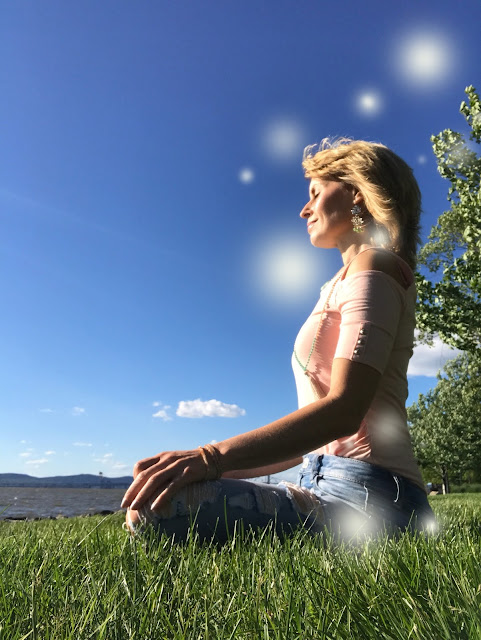Bandhas/Inner Locks Inspiration
To understand the bandhas, our inner locks, we must tap into our energy body. The fastest way there is to sit still, close your mouth and deepen your breath through your nose. Eventually you can pause for a brief moment at the bottom of your exhales while contracting your pelvic floor and abdominal muscles as well as bowing your chin down to your chest. This action of contraction are the bandhas. However the work is refining your breath and finding the subtle muscular work needed to find your inner locks. This requires plenty of time studying with a skilled teacher and your imagination.
This Bandhas post is inspired by my teaching last week about the inner locks at Ramapo College of New Jersey's 200hr Yoga Teacher Training special Bandhas Study class. Below are a few notes on our 3 most sought after inner locks:
Mula Bandha-
Mula means root or foundation. It is located within the perineum. A beginner way to find it is to contract your pelvic floor muscles. Overtime the contraction is more central within the perineal body and less focused within the anus and urogenital muscles. The benefits of engaging mula bandha is our exhale, our downward wind called apana vayu meets our inhale, our upward wind called prana vayu. This meeting creates that wonderful and healthy yoga bliss zone state that keeps us coming back for more yoga.
Uddiyana Bandha-
Uddiyana means flying upward. To find it contract your abdominal muscles in and upwards after a complete exhalation. This lock sits within our fire center, our third chakra. This bandha burns the impurities that weigh us down and replenishes our well. Engaging this lock strengthens the core body and massages the heart.
Jalandhara Bandha-
Jala means a net or web. To find it drop the chin to the chest. This energetic net catches the nectar, amrita that drips down from the crown chakra. This nectar would be burned within the fire of the belly if this lock is not engaged. Jalandhara bandha regulates blood flow to the heart, neck and head. Similar to mula bandha, engaging jalandhara bandha encourages the upward wind, prana vayu to meet with the downward wind apana vayu. This union balances our energy in a beautiful way.

.png)
